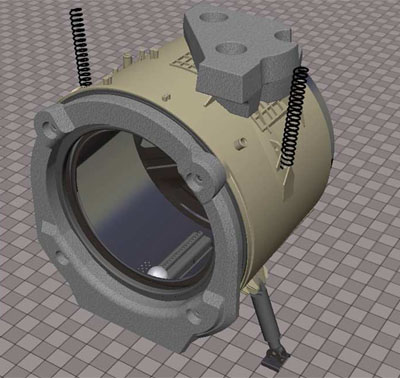
 An Innovative Simulation-Based Approach to Develop Microcontrollers Applications
An Innovative Simulation-Based Approach to Develop Microcontrollers Applications
Fabio Marcuzzi
University of Padua – ITALY
Curriculum
Fabio Marcuzzi is Assistant Professor of Numerical Analysis at the Department of Mathematics of the University of Padova.
He is involved mainly in inverse problems in computational mechanics, focusing on algorithmic and numerical/ computational issues.
For a list of his publications, see
http://www.math.unipd.it/~marcuzzi/pubblicazioni.html.
He graduated in Electronics Engineering in 1991 and developed the control firmware for a few industrial applications. Then he got a PhD in Computational Mathematics in 2000 with a thesis on Adaptivity in the Finite Element Method and then started developing the co-simulation of the control electronics and the multiphisical controlled system as a systematic approach to the design and prototyping of microcontroller applications.
Fabiano Maggio
EnginSoft – ITALY
Curriculum
Fabiano Maggio graduated in Mechanical Engineering at University of Padua on 2001.
Three years later he got a Ph.D in Motorcycle Engineering from the same University, developing a research on Two Steering Wheel Motorcycles.
He joined EnginSoft in 2005 starting his career as multibody dynamics analyst. In a few years he widened his knowledge in CAE, managing a large number of structural, durability, and optimization projects as well.
He was Company's representative in a couple of European Projects and evaluator for new emerging CAE technologies. Now, he is responsible of the Multibody Dynamics Technical Area at EnginSoft.
Abstract
Programmable microcontrollers equip almost any electronic or mechatronic device. The firmware program controls the device and implements its functionality for the user.
Product innovation and safety are often devolved to the quality of this firmware. the co-simulaton of the running firmware and its interacting multiphysical environment can improve substantially the reliability of the firmware at much lower costs than experienced in the physical testing of the product. Also, the virtual prototyping done with a co-simulation tool boosts the innovation rate of the product functionality.
A key aspect for the success of the co-simulation approach is to keep models aligned with the available experimental data, i.e. system identification and model updating. A couple of industrial applications will be presented.


